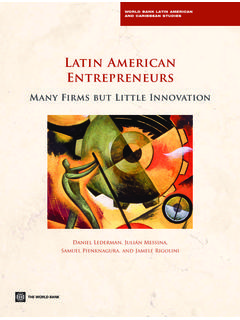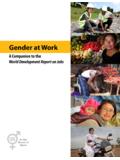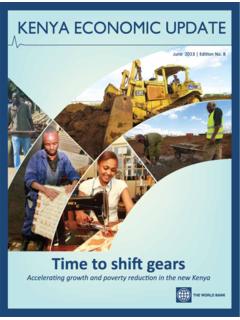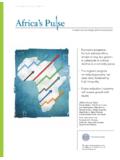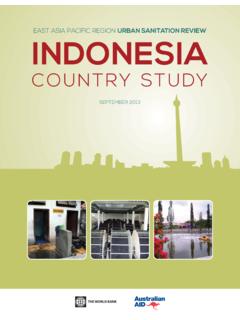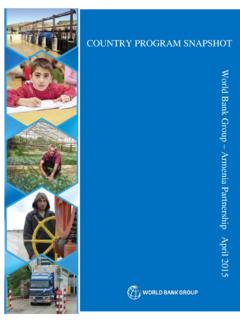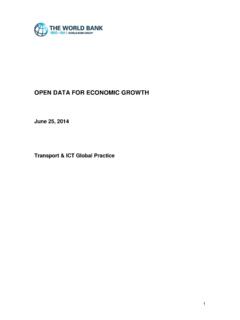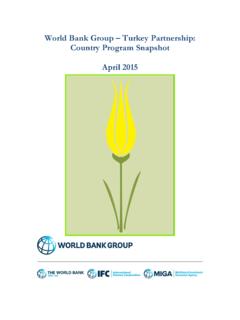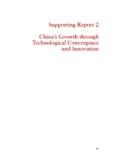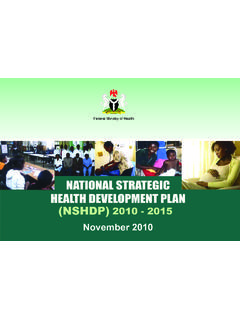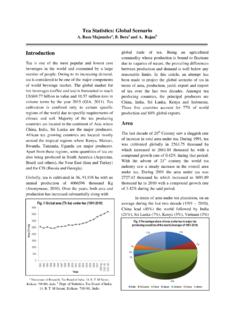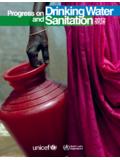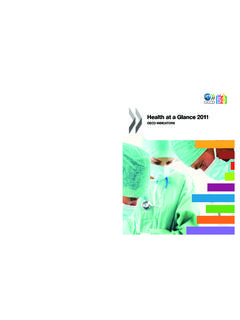Transcription of Payments and Transactions - World Bank
1 Payments and Transactions 18 March 2014 Contents: Session Brief Session Summary Presentations o Session Framing o Kenya o Egypt o Bangladesh Payments and Transactions Session Lead: Sarah Rotman, Financial Sector Specialist, Consultative Group to Assist the Poor (CGAP) Speakers: Ali Noor Ismail, Principal Secretary, Ministry of Labor, Social Security and Services, Kenya Magdy E. Elhennawy, Family Card Projects General Manager, Ministry of State for Administrative Development, Egypt Arastoo Khan, Additional Secretary, Economic Relations Division, Ministry of Finance, Bangladesh Background Many poor people in developing countries still rely on the physical delivery of cash to receive Payments and access financial services. One of the major impediments to providing convenient Payments and financial services to the poor has been the high cost inherent in the traditional brick-and-mortar branch model. But with the recent emergence of new technologies and delivery models, the economics of banking is changing drastically.
2 The rapid growth of mobile phones and point-of-sale (POS) devices has now created an opportunity to reach more poor people than ever before. Increasingly, governments and donors are looking to transition their social transfer Payments from cash to electronic Payments and, in some cases, incorporate financial inclusion objectives into these payment schemes. This momentum toward e- Payments rests on the promise of improving transparency, reducing leakage, and decreasing costs on the one hand, and facilitating value-added services for beneficiaries through financial access on the other. This transition in payment mechanisms should be studied from the perspective of the three main stakeholders in the system: the government is focused on the affordability of e- Payments in social transfer programs; the payment service provider (PSP) is focused on the profitability of offering such services; and the beneficiary is focused on the ease, cost and regularity of the payment process.
3 Research to date has shown that by leveraging existing Payments infrastructure for social transfers, governments are able to reduce the cost of making these Payments . The Government of Brazil saves percent of the cost of Payments to Bolsa Familia beneficiaries by having 15 percent of Payments land in bank accounts and paid out by agents. But in countries where the infrastructure (such as an agent distribution network) needs to be built up in order to make e- Payments , the cost to governments may increase in the short-term. In Colombia, the government paid US$ for account-based Payments through agents, a substantial increase from the previous cash payment fee of US$ Research also shows that beneficiaries welcome the convenience of e- Payments over cash, but few recipients use the bank account, when offered, for much else beyond withdrawing benefits. In some remote areas, however, cash Payments may still prove to be more convenient and cheaper for beneficiaries.
4 The social protection industry is increasingly enthusiastic about the promise of e- Payments for social transfers. Such promise rests largely on the assumption that Payments technology and infrastructure is sufficiently advanced to support more efficient and more transparent payment schemes. But technology will never be a panacea to substitute for robust processes and solid preparation. The ongoing dialogue about social transfer Payments and Transactions needs to be honest and recognize that the feasibility of e- Payments for social transfer programs will vary across payment methods and across countries. Country Cases There has been a flurry of innovation in social transfer Payments and transaction schemes. While many countries have experiences to share on this topic, this session will highlight three specific country cases. Kenya Kenya is arguably the most advanced ecosystem for mobile Payments in the World with the early and enormous success of M-PESA, a mobile phone-based money transfer service.
5 Likewise, both bank and nonbank agent networks are very well developed throughout the country. Various social transfer programs in Kenya have experimented with new payment mechanisms transitioning from direct cash payouts, to semi-manual cash payouts through the Postal Corporation, to the use of e- Payments through both mobile phones and smart cards offered by mobile network operators and banks. Egypt Starting in 2006, Egypt implemented a smart card system for its subsidized food program that covers three-fourths of its population. The Ministry of State for Administrative Development (MSAD) maintains the registry of the individual members of families that have a family card which entitles them to receive subsidized food under a program run by another ministry. The same card is used for social assistance Payments from a third ministry. The transaction information flows to the MSAD and is then accessible to the other two ministries who use the information to allocate cash and food, respectively and to track their Transactions .
6 Although there are different points of transaction food shops and post offices for cash the transaction process and the back-end information system are the same. There is a discussion underway to extend the same infrastructure for other subsidies such as subsidized fuel. Bangladesh Bangladesh has several recent experiences using mobile financial services to make government-to-person (G2P) Payments in various social protection programs. Electronic Post Office debit cards are being used to make conditional cash transfers to poor mothers. Electronic Post Office debit cards and mobile phones are also being piloted to make wage Payments linked with work site attendance in the country's flagship public works program. These innovative payment options are motivated by the goal to minimize leakage as well as decrease transaction costs. The G2P payment modalities will be further facilitated by the national database of poor households that will be linked to a biometric-enabled electronic identification system which is currently underway.
7 Payments and Transactions Session Summary Global trends in electronic Payments are unclear. Around, 27% and 25% of lower-middle and low income countries, respectively, process G2P Payments electronically (self-reported by 130 regulators). However, there is a move towards financially-inclusive social protection Payments . For example, as of 2012, 61% of G2P Payments occur in a manner that allows for savings either though store of value or more financially-inclusive methods. However, big distinction between savings-enabled (programs allowing some store of value) and savings-encouraged (programs that either provide direct incentives for saving or at the very least inform beneficiaries proactively about the ability to save). Case Studies Kenya The objectives of the cash transfer program in Kenya are to improve the welfare and resilience of beneficiaries, with the aim of reducing poverty and vulnerability. The key criteria for selection is poverty (use of proxy means test and community based targeting).
8 Key Findings It is critical to adopt good delivery mechanisms especially the use of new technologies ( electronic payment system) for effective & efficient delivery; Use of multiple delivery mechanisms is importance given the regional infrastructural disparities; Programs must endeavor to have well managed Information Systems (MIS) that can be integrated with the payment mechanism to ensure effective delivery; Good governance is critical for successful implementation of any program. Egypt The Family Smart Card program in essence allows for one entity to manage the delivery of all support services, with the coordination of related ministries: Enable evaluation to delivered services to the one family. Allow integration between all delivered services. A first step to do this included building technical system architecture for an expandable, customizable, and secured subsidy system: the base for all securely delivered services to beneficiaries.
9 The subsidy scheme is unique in terms of its emphasis on public-private partnership and results-based contracting arrangements. There is no cost incurred by the system users (beneficiaries). Key Findings Technical: Multi-application smart card technology Call centers, support centers, service centers Protection and security features Appropriate workflows Contractual: Apply win-win policy with private sector Avoid monopoly, by contracting with more than one contractor Unify system specs for all contractors Expandability: Delivery of service from any grocer Availability of switching bet. Commodity and cash Allow electronic wallet Challenges faced by the program (at different stages in the project cycle): Designing an expandable, safe and self-sustaining system Building system databases Building confidence between citizens and government Technical issues (system continuity, interoperability, security, safety) Culture of stakeholders system (grocer, supply office) Upgrading the technological level of the stakeholders system System sustainability System interoperability Bangladesh The Employment Generation Program for the Poorest (EGPP) public works program was introduced by the Government of Bangladesh in 2008 to mitigate the negative effects of agricultural lean seasons (twice-a-year) on the poor.
10 Key Findings Time and cost savings (seen during pilot evaluations) The card-based solution saved on average hours per week for the supervisor during attendance tracking The mobile-based solution saved 6 hours per week and $ in travel costs for beneficiaries during paydays Unexpected (but welcome) value created Many of the beneficiaries viewed the plastic card in the card-based pilot as an ID card and appreciated this greatly, since many did not have any form of government ID before Change management requires a lot of effort Especially for programs that deal with local government bodies and less-educated beneficiaries, change management activities need to be well thought out and allowed a lot of time to learn from repeat behavior Proper value articulation overcomes intrinsic hurdles Once people understand how a new solution helps them directly (reduces processing time, cuts costs, etc.), they will put in the effort to learn the new solution more proactively Main Themes of the Q&A Period Authentication process: In Egypt, each family is assigned to a specific grocer or service provider in his/ her region at the onset of the program.
